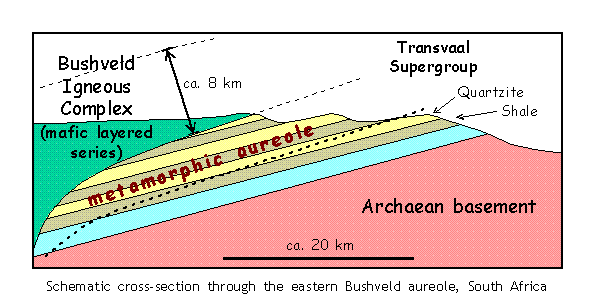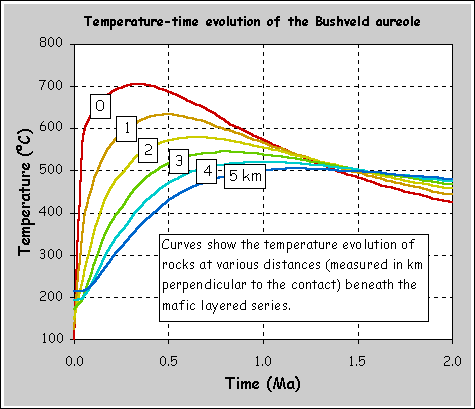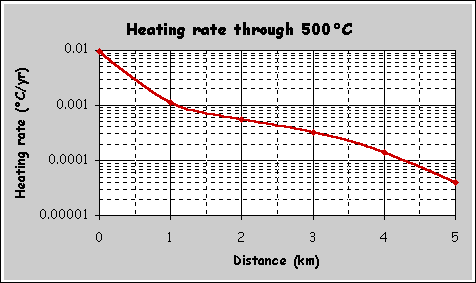Microstructures of Metamorphic Rocks
The metamorphic aureole of the Bushveld Complex
To study the nucleation process indirectly, we have chosen a natural setting where the thermal history of the rocks can be constrained. This is the world’s largest contact metamorphic aureole, beneath the layered basic rocks of the Bushveld Complex, South Africa. The intrusion is like a giant sill, up to 8 km thick, overlying sedimentary rocks, including shales in which the minerals of interest to us have grown. Because the intrusion is so large, the depth and time scales are more like those of regional metamorphism, but without the complication of directed stresses and deformation.

Knowing the size, shape and initial temperature of the magma body, we calculate the temperature-time history for different points in the thermal aureole.

Note that if a mineral (e.g. andalusite) forms by reaction at 500°C, the rate of heating through this reaction will be faster at points closer to the igneous contact. So, we can study the same mineral, formed by the same reaction, over a range of heating rates.

Alternatively we can compare different minerals, formed by different reactions, at the same point in the aureole.